In today’s global marketplace, door-to-door shipping has emerged as a strategic solution for businesses looking to streamline their logistics operations. This comprehensive service enables seamless transportation from a seller’s location directly to a buyer’s doorstep, eliminating the complexities often associated with international shipping. For companies importing goods from China to Mexico, leveraging a professional logistics partner like Dantful International Logistics can enhance efficiency, reduce handling risks, and simplify customs processes.
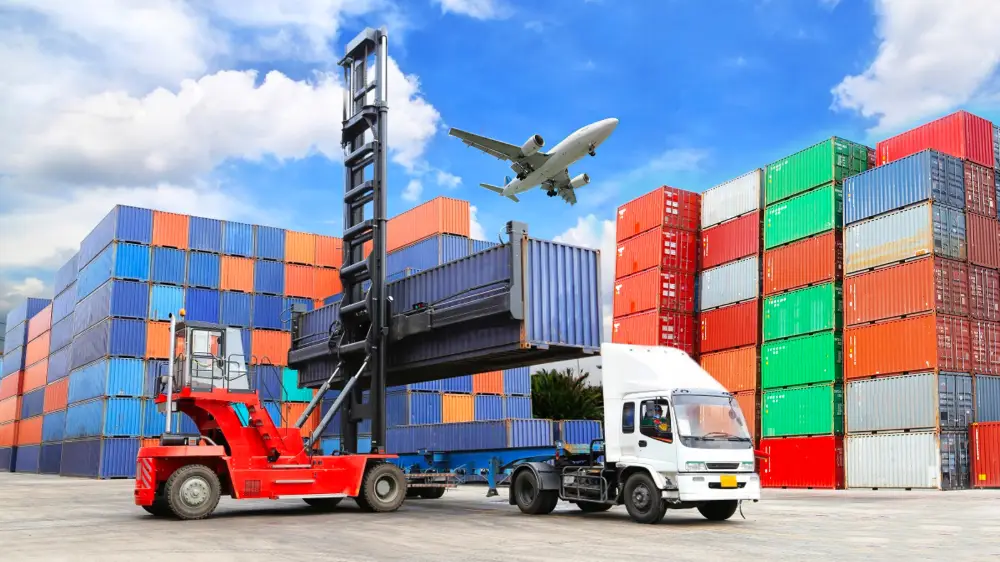
What is Door-to-Door Shipping?
Door-to-door shipping is a logistics service that provides a seamless transportation solution from the seller’s location directly to the buyer’s doorstep. This service encompasses all stages of the shipping process, including pick-up, transportation, customs clearance, and final delivery. For businesses importing goods from China to Mexico, door-to-door shipping offers an efficient and convenient way to manage their logistics needs, eliminating the complexities often associated with international shipping.

Key Components of Door-to-Door Shipping
The key components of door-to-door shipping include:
- Pick-Up Service: The logistics provider collects the goods from the seller’s location.
- Transportation: The goods are transported via ocean freight or air freight to the destination country.
- Customs Clearance: The logistics provider handles all customs formalities to ensure compliance with local regulations.
- Last Mile Delivery: The goods are delivered directly to the buyer’s address.
This comprehensive approach allows businesses to streamline their supply chain management and focus on their core operations.
DDU and DDP
Door-to-door shipping can operate under different terms, mainly DDU (Delivered Duty Unpaid) and DDP (Delivered Duty Paid):
- DDU: In this arrangement, the seller is responsible for all costs and risks associated with transporting the goods until they reach the destination country. However, customs duties and taxes are not included, leaving the buyer to handle these charges upon arrival.
- DDP: Here, the seller assumes full responsibility for shipping costs, customs clearance, duties, and taxes. This option provides the buyer with a clear understanding of the total shipping costs upfront, as they bear no additional charges upon delivery.
Choosing between DDU and DDP is crucial based on the business’s financial strategy and market understanding.
You may be interested in the following related articles:
- The Ultimate Guide to Door to Door Shipping from China to Oman
- Step-by-Step Process for Door to Door Shipping from China to Brazil
- The Ultimate Guide to Door to Door Shipping from China to the United States
- The Ultimate Guide to Door to Door Shipping from China to Netherlands in 2024
- The Ultimate Guide to Door to Door Shipping from China to Spain
- The Ultimate Guide to Door to Door Shipping to Jamaica
Advantages of Door-to-Door Shipping
Convenience and Time-Saving
One of the most significant advantages of door-to-door shipping is its unmatched convenience. By delegating the entire shipping process to a freight forwarder like Dantful International Logistics, businesses can save valuable time. The logistics provider manages every aspect of the shipment, allowing companies to focus on their core activities without getting bogged down by logistics.
Reduced Handling and Potential for Damage
With door-to-door shipping, the number of handling points is minimized. Fewer handling stages mean reduced risk of damage to the goods. By utilizing a single logistics provider, businesses can ensure that their products are treated with care from pick-up to delivery, thus safeguarding their investments.
Simplified Customs Clearance Process
Navigating customs regulations can be one of the most challenging aspects of international shipping. However, with door-to-door shipping, the logistics provider manages the customs clearance process. This simplifies compliance with local laws and regulations, ensuring that shipments are not delayed due to paperwork issues. Efficient customs clearance is crucial for maintaining supply chain efficiency, especially when importing goods from China to Mexico.
Single Point of Contact for the Entire Shipment
Another advantage of door-to-door shipping is having a single point of contact throughout the shipping process. This eliminates the confusion and frustration of dealing with multiple parties. Businesses can directly communicate with their logistics provider, like Dantful International Logistics, for updates, concerns, or inquiries. This streamlined communication enhances overall efficiency and provides peace of mind to importers.
For those looking to benefit from door-to-door shipping from China to Mexico, Dantful International Logistics offers a highly professional, cost-effective, and high-quality one-stop international logistics service tailored for global traders. Reach out to us for tailored solutions that meet your specific shipping needs!
Shipping Methods from China to Mexico
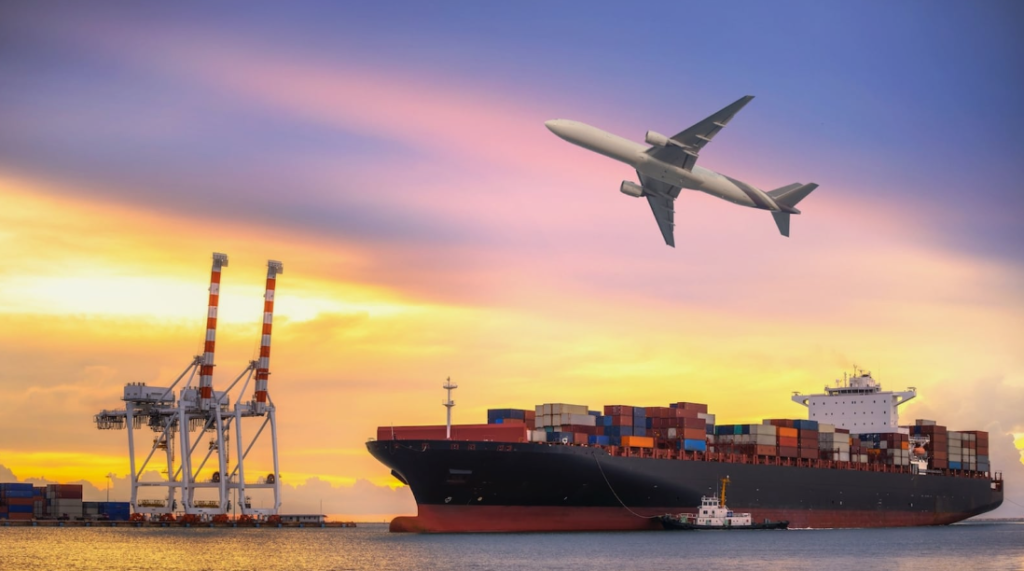
When it comes to door-to-door shipping from China to Mexico, businesses have several shipping methods to choose from, each with its distinct advantages, depending on the urgency, shipment size, and budget. Below are the primary methods utilized:
Air Freight Door-to-Door Shipping
Air freight is the fastest method for shipping goods from China to Mexico. This option is ideal for high-value or time-sensitive items, as it minimizes transit time significantly.
- Speed: Air freight typically takes between 3 to 7 days for delivery, making it suitable for businesses that require quick turnover.
- Reliability: Airlines generally have strict schedules, ensuring reliable arrival and departure times.
- Less Handling: With fewer stops and handling points, the risk of damage is reduced.
- Ideal for Small Shipments: Air freight is particularly effective for smaller shipments, where sending a full container may not be economical.
However, it is important to note that air freight incurs higher costs compared to sea freight, which may affect budgeting decisions.
Sea Freight Door-to-Door Shipping
Sea freight is the most commonly used method for bulk shipments from China to Mexico. It is cost-effective for large quantities of goods but does take longer than air freight.
- LCL (Less than Container Load) Door-to-Door: This option is perfect for businesses that do not have enough goods to fill an entire shipping container. With LCL, your goods are consolidated with other shipments, which helps lower costs. However, this may increase transit time due to the consolidation process.
- FCL (Full Container Load) Door-to-Door: For larger shipments, FCL is the preferred method. When utilizing FCL, you have the entire container dedicated to your goods, providing not only cost-effectiveness but also faster handling since there is no need for consolidation. This method is the most efficient for transporting larger volumes of products.
Sea freight is generally more economical for large shipments, making it an attractive option for businesses looking to minimize shipping costs.
Express Door-to-Door Shipping
Express shipping combines speed and reliability, offering the quickest option for door-to-door delivery. This method is particularly useful for urgent shipments that need to reach their destination within a specific timeframe.
- Speed: Express services can deliver goods within 1 to 3 days, depending on the destination and service provider.
- Comprehensive Services: Providers like Dantful International Logistics often handle the entire logistics process, including customs clearance and last-mile delivery.
- Ideal for Small to Medium Shipments: While express shipping can be more expensive, it is perfect for urgent, high-value, or sensitive shipments that require special handling.
Overall, express shipping is an excellent choice for businesses that prioritize speed and reliability.
READ MORE:
- Shipping From China to the United States
- Shipping From China TO Canada
- Shipping From China TO Mexico
- Shipping From China to Panama
- Shipping From China to Costa Rica
- Shipping From China to Brazil
- Shipping From China TO Colombia
- Shipping From China to Jamaica
- Shipping From China to Venezuela
Steps in the Door-to-Door Shipping Process

Understanding the steps involved in the door-to-door shipping process is essential for a smooth shipping experience. Here’s a detailed breakdown of the process when shipping from China to Mexico:
Pickup from the Supplier in China
The first step involves coordinating with the supplier in China to arrange for the pickup of the goods. This includes scheduling a convenient time for collection and ensuring that all items are ready for transport. A logistics provider like Dantful International Logistics can assist in managing this process to ensure everything is organized efficiently.
Export Customs Clearance in China
Once the goods are picked up, they must go through export customs clearance. This step involves submitting the necessary documentation to Chinese customs authorities, which may include invoices, packing lists, and export permits. Having an experienced freight forwarder can simplify this process by ensuring all documentation is correctly prepared, minimizing the risk of delays.
International Transportation (Air or Sea)
After customs clearance, the goods are transported to Mexico via air or sea. The choice between air and sea freight will depend on the urgency of the shipment. Air freight offers faster transit times, while sea freight is more economical for larger shipments.
Import Customs Clearance in Mexico
Upon arrival in Mexico, the shipment must undergo import customs clearance. This involves submitting the required documentation to Mexican customs authorities, such as import permits, invoices, and proof of payment of duties and taxes. Again, having a proficient logistics provider like Dantful helps ensure that all processes comply with local regulations, facilitating quick customs clearance.
Last-Mile Delivery to the Final Destination
The final step is last-mile delivery, where the goods are transported from the customs facility to the buyer’s specified address. This part of the process is crucial, as it ensures that the shipment reaches its final destination safely and on time. Effective coordination during this step is essential to guarantee customer satisfaction.
By choosing a reliable logistics partner like Dantful International Logistics, companies can streamline their shipping processes, ensuring efficient and cost-effective delivery of goods.
Customs and Documentation
Navigating customs regulations and documentation is a crucial aspect of international shipping. Understanding the required documents for export from China and import regulations for Mexico will help ensure a smooth shipping experience.
Required Documents for Export from China
When exporting goods from China, several key documents are typically required:
- Commercial Invoice: This is a document provided by the seller to the buyer, detailing the sale transaction. It includes information such as product description, quantity, price, and payment terms. It serves as the primary document for customs clearance.
- Packing List: This document outlines the contents of each package in the shipment, including dimensions and weight. It helps customs officials verify the goods being exported.
- Bill of Lading (B/L): This is a legally binding document between the shipper and carrier. It acts as a receipt of goods and a contract for transportation. It can be in the form of a sea waybill (for sea freight) or an airway bill (for air freight).
- Export License: Depending on the type of goods being exported, an export license may be required. This is particularly relevant for sensitive products, such as technology items or goods subject to export controls.
- Certificate of Origin: This document certifies the country in which the goods were manufactured. It can be necessary for determining tariffs and compliance with trade agreements.
- Customs Declaration: A formal statement submitted to customs authorities detailing the goods being shipped and their value, which must be filed prior to export.
Import Regulations and Documentation for Mexico
For importing goods into Mexico, the following documentation is typically required:
- Commercial Invoice: Similar to the export process, a commercial invoice is required to document the transaction and is used for customs clearance.
- Bill of Lading: This document is also required for verifying the shipment and serves as proof of transportation.
- Import Permits: Certain goods may require specific import permits or licenses, depending on Mexican regulations. It’s essential to verify whether your products fall into these categories.
- Customs Declaration: Importers must complete a customs declaration form detailing the shipment contents.
- Proof of Payment of Duties and Taxes: Import duties and taxes must be paid before goods can be cleared for entry into Mexico.
- Certificate of Origin: This document may be necessary based on the trade agreements Mexico has with other countries.
Tips for Smooth Customs Clearance
- Ensure Accurate Documentation: Double-check all forms for accuracy before submission to avoid delays.
- Work with a Professional Freight Forwarder: Partnering with a logistics provider like Dantful International Logistics can streamline the customs clearance process, as they have expertise in handling documentation and compliance.
- Maintain Open Communication: Stay in contact with your shipping and customs broker to receive timely updates and address potential issues proactively.
- Understand Local Regulations: Familiarize yourself with both Chinese export regulations and Mexican import requirements to ensure compliance.
- Keep Copies of All Documents: Maintain copies of all shipping and customs documents for your records and to assist in resolving any issues that may arise.
Choosing a Reliable Shipping Partner
Selecting the right freight forwarder is crucial for ensuring the success of your shipping operations from China to Mexico. Here are important factors to consider:
Factors to Consider When Selecting a Freight Forwarder
- Experience and Expertise: Look for a freight forwarder with substantial experience in handling shipments between China and Mexico. Their knowledge of the local market, regulations, and logistics challenges can save you time and money.
- Reputation and Reviews: Investigate the freight forwarder’s reputation by reading customer reviews and testimonials. A trustworthy partner should have positive feedback regarding their reliability and service quality.
- Range of Services: Ensure that the freight forwarder offers comprehensive services, including customs clearance, insurance, warehousing, and real-time tracking. This will simplify the logistics process and provide peace of mind.
- Network and Connections: A well-connected freight forwarder will have established relationships with carriers and customs officials, facilitating smoother operations and potentially better rates.
Importance of Experience in China-Mexico Trade Routes
Experience is key when selecting a freight forwarder for China-Mexico trade routes. An experienced partner will:
- Understand the complexities of customs regulations in both countries.
- Be familiar with the best shipping methods and transit times.
- Have established processes for dealing with common import/export challenges.
- Possess knowledge of tariffs, duties, and trade agreements that could affect your shipments.
essential Services
When choosing a freight forwarder, consider these essential services:
- Real-Time Tracking: Ensure your logistics partner provides a tracking system that allows you to monitor your shipment’s status throughout the shipping process.
- Insurance Options: Inquire about insurance options to protect your goods against loss or damage during transit. A reputable forwarder will offer a variety of insurance plans tailored to your needs.
- Customs Clearance Support: Look for partners that offer customs clearance services, simplifying the documentation process and ensuring compliance with regulations.
- Customer Support: Choose a forwarder that provides dedicated customer support, ensuring you can get assistance whenever needed and resolve issues quickly.
- Flexible Solutions: A reliable freight forwarder should offer flexible shipping options to accommodate your unique shipping requirements and any changes that may arise.
By partnering with an experienced logistics provider like Dantful International Logistics, businesses can ensure efficient and hassle-free shipping processes tailored to their specific needs.
Cost Factors in Door-to-Door Shipping
Understanding the cost factors involved in door-to-door shipping is crucial for businesses looking to manage their logistics expenses effectively. The overall cost can vary significantly based on multiple factors, and a clear breakdown of these costs helps businesses budget accordingly.
Breakdown of Typical Costs Involved
The typical costs associated with door-to-door shipping include:
| Cost Component | Description |
|---|---|
| Pick-Up Charges | Fees for collecting goods from the seller’s location. |
| Transportation Costs | Costs associated with the chosen method (air freight, sea freight, or express service). |
| Customs Clearance Fees | Charges for processing customs documentation and complying with regulatory requirements. |
| Duties and Taxes | Import duties and taxes applicable upon arrival in the destination country. |
| Insurance | Optional fees to insure goods against loss or damage during transit. |
| Delivery Charges (Last Mile) | Costs related to the final delivery to the buyer’s address. |
| Handling Fees | Additional fees for loading and unloading goods during transit. |
Factors Affecting Pricing
Several factors can influence the overall pricing for door-to-door shipping:
- Shipping Method: Air freight is typically more expensive than sea freight. Choosing between LCL (Less than Container Load) and FCL (Full Container Load) also affects costs.
- Distance and Route: The length of the shipping route and the specific logistics involved can impact costs. Longer distances usually incur higher transportation fees.
- Weight and Volume: Heavier and bulkier shipments will generally cost more due to increased handling and transportation costs.
- Customs Regulations: The complexity of customs regulations in both China and Mexico may introduce additional costs related to delays or additional paperwork.
- Urgency: Express shipping options come at a premium compared to standard shipping methods, affecting the overall shipping budget.
- Seasonality: Fluctuations in shipping demand during peak seasons can lead to higher prices. Planning shipments during off-peak periods can help manage costs.
Tips for Cost Optimization
- Assess Shipping Needs: Evaluate whether air or sea freight is more appropriate based on urgency and cost. Use LCL for smaller shipments and FCL for larger, consistent volumes.
- Compare Freight Forwarders: Obtain quotes from multiple freight forwarders, like Dantful International Logistics, to find competitive pricing and service options.
- Utilize Free Trade Agreements (FTAs): Take advantage of any applicable FTAs that may reduce duties or taxes when importing goods to Mexico.
- Consolidate Shipments: Combine multiple shipments into one to save on transportation costs and handling fees.
- Insurance Options: Compare insurance options and choose coverage that protects your investment without inflating costs unnecessarily.
Transit Times in Door-to-Door Shipping
Transit times can vary significantly depending on the chosen shipping method and other influencing factors. Understanding estimated durations helps businesses plan their operations effectively.
Estimated Durations for Different Shipping Methods
| Shipping Method | Estimated Transit Time |
|---|---|
| Air Freight | 3 to 7 days |
| Sea Freight (LCL) | 15 to 30 days |
| Sea Freight (FCL) | 15 to 25 days |
| Express Shipping | 1 to 3 days |
Factors That Can Affect Delivery Times
- Customs Clearance: Delays in customs procedures can extend transit times, particularly if documentation is incomplete or errors occur.
- Weather Conditions: Adverse weather conditions can disrupt shipping schedules, especially for air and sea transport.
- Logistics Provider Efficiency: The effectiveness of the logistics provider in managing transport and customs processes can impact overall delivery times.
- Port Congestion: Busy ports or logistical hubs can experience delays, especially during peak shipping seasons.
- Distance: Longer distances inherently require more time for transit, especially for sea freight.
By understanding the cost factors and transit times involved in door-to-door shipping, businesses can make informed decisions that align with their operational needs and budgetary constraints. Partnering with a logistics provider like Dantful International Logistics can further streamline these processes, ensuring efficient and cost-effective shipping solutions tailored to your business.
Dantful International Logistics Services:
- Dantful Ocean Freight Services
- Air Freight From China
- Amazon FBA Freight Forwarding
- WAREHOUSE Services
- One-Stop Customs Clearance Solution
- Cargo Insurance Services in China
- DDP Shipping Services By Dantful Logistics
- Out of Gauge Cargo Transportation Shipping Services
Challenges and How to Overcome Them
Shipping goods from China to Mexico via door-to-door shipping can present various challenges. Understanding these common issues and implementing effective strategies is crucial for businesses aiming to maintain efficiency in their supply chain operations.
Common Issues in China-Mexico Shipping
- Customs Delays: One of the most significant challenges in international shipping is navigating customs regulations. Delays can occur if documentation is incomplete or incorrect, leading to additional costs and extended delivery times.
- Language Barriers: Communication difficulties can arise due to language differences, complicating negotiations and the understanding of customs requirements and shipping terms.
- Cultural Differences: Misunderstandings stemming from different business practices and cultural norms can affect negotiations and operational efficiency between Chinese suppliers and Mexican importers.
- Shipping Costs Fluctuations: Variability in shipping rates due to fuel prices, demand fluctuations, and seasonal changes can hinder budget planning for businesses.
- Infrastructure Limitations: Inadequate infrastructure, particularly in remote areas, can lead to delays during the last-mile delivery phase, affecting the overall efficacy of door-to-door shipping.
- Risk of Damage or Loss: Goods may be exposed to damage or loss during transit, especially if proper handling measures are not put in place.
- Regulatory Changes: Frequent changes in trade policies and regulations can create uncertainty and compliance challenges for businesses engaged in cross-border shipping.
Strategies to Mitigate Risks and Delays
- Thorough Documentation Preparation: Ensure all shipping and customs documentation is complete and accurate before shipment. Utilize experienced freight forwarders like Dantful International Logistics to assist in verifying the necessary documents, which may include invoices, packing lists, and customs declarations.
- Hire Local Agents: Consider partnering with a local customs broker or freight forwarder in Mexico to help navigate customs clearance more effectively. These professionals understand local regulations and can expedite the process.
- Effective Communication: Maintain open lines of communication with all parties involved, including suppliers and logistics providers, to ensure alignment and quickly address any issues that may arise during the shipping process.
- Cultural Training: Invest in cultural training for your team to better understand and navigate the differences in business practices between China and Mexico. This can aid in building stronger relationships and improving negotiations.
- Budget for Contingencies: Prepare for unexpected costs by building contingencies into your shipping budget. This enables you to manage fluctuations in shipping rates and unforeseen expenses.
- Insurance Coverage: Obtain comprehensive insurance coverage for your shipments to protect against loss or damage during transit. This provides peace of mind and financial protection against potential setbacks.
- Regularly Monitor Regulations: Stay informed about changes in trade regulations and customs policies that may affect your shipping operations. This allows for proactive adjustments to your logistics strategy.
- Plan for Lead Times: Factor in longer lead times for customs clearance and potential delays when planning your shipments. By setting realistic timelines, you can better manage customer expectations and reduce stress on your supply chain.
- Leverage Technology: Utilize tracking and management software to enhance visibility into your shipping process. This helps in monitoring shipments in real time and identifying potential issues before they escalate.
By proactively addressing these challenges, businesses can enhance their efficiency in door-to-door shipping from China to Mexico. Partnering with a skilled logistics provider like Dantful International Logistics can significantly mitigate risks and streamline the shipping process, ultimately leading to improved operational performance and customer satisfaction.
FAQs
- What is door-to-door shipping?
- Door-to-door shipping is a logistics service that transports goods directly from the seller’s location to the buyer’s doorstep, handling all stages of the shipping process, including pick-up, transportation, customs clearance, and final delivery.
- What are the key components of door-to-door shipping?
- The key components include pick-up service, transportation (via air freight or ocean freight), customs clearance, and last mile delivery.
- What is the difference between DDU and DDP?
- DDU (Delivered Duty Unpaid) means the seller is responsible for costs until the goods reach the destination country, but customs duties and taxes are the buyer’s responsibility. DDP (Delivered Duty Paid) indicates the seller covers all costs, including customs duties and taxes, providing the buyer with a clear total shipping cost upfront.
- What are the advantages of using door-to-door shipping?
- Advantages include convenience and time-saving, reduced handling and potential for damage, simplified customs clearance, and having a single point of contact throughout the shipping process.
- What shipping methods are available for shipping from China to Mexico?
- The primary shipping methods include air freight, sea freight (LCL and FCL), and express shipping. Each method has its advantages regarding speed, cost, and shipment size.
- How long does door-to-door shipping take?
- Estimated transit times vary by method: air freight typically takes 3 to 7 days, sea freight (LCL) takes 15 to 30 days, sea freight (FCL) takes 15 to 25 days, and express shipping can take 1 to 3 days.
- What documentation is required for shipping from China to Mexico?
- Key documents include a commercial invoice, packing list, bill of lading, export license (if needed), customs declaration, and potentially a certificate of origin.
- What factors affect the cost of door-to-door shipping?
- Factors include shipping method (air or sea), distance, weight and volume of the shipment, customs regulations, urgency, and seasonal variations in shipping demand.
- How can I mitigate challenges in the shipping process?
- Strategies include preparing thorough documentation, hiring local agents for customs clearance, maintaining effective communication, budgeting for contingencies, obtaining insurance, and leveraging technology for tracking shipments.

Young Chiu is a seasoned logistics expert with over 15 years of experience in international freight forwarding and supply chain management. As CEO of Dantful International Logistics, Young is dedicated to providing valuable insights and practical advice to businesses navigating the complexities of global shipping.
The other language versions of this article
- الكشف عن أسرار الشحن من الباب إلى الباب من الصين إلى المكسيك – دانتفول
- De geheimen van de deur-tot-deur-verzending van China naar Mexico ontsluiten
- Percer les secrets de l’expédition porte à porte de la Chine au Mexique
- Die Geheimnisse des Tür-zu-Tür-Versands von China nach Mexiko lüften
- Svelare i segreti della spedizione porta a porta dalla Cina al Messico
- Descubriendo los secretos del envío puerta a puerta desde China a México
- Desvendando os segredos do transporte porta a porta da China para o México
- Раскрываем секреты доставки от двери до двери из Китая в Мексику
- Çin’den Meksika’ya Kapıdan Kapıya Nakliyenin Sırlarını Çözmek




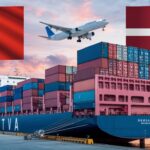

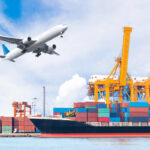

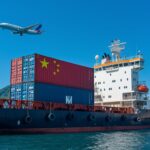

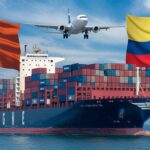
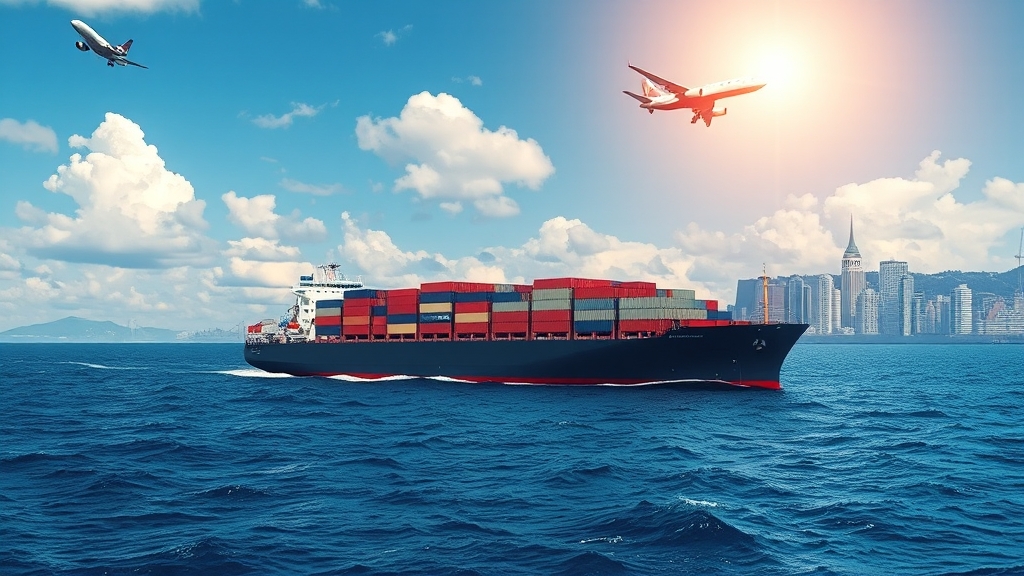

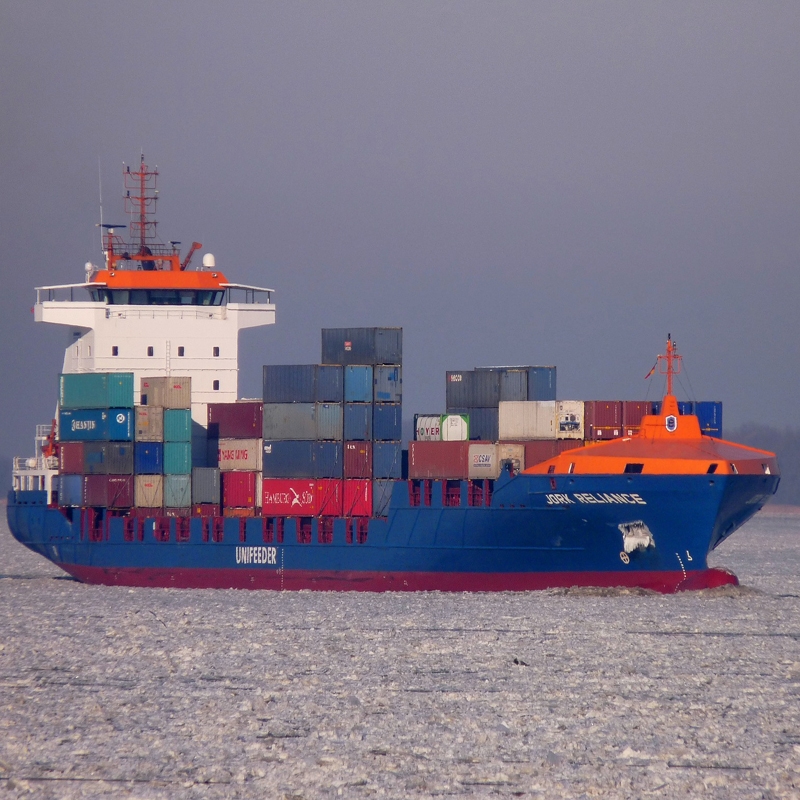
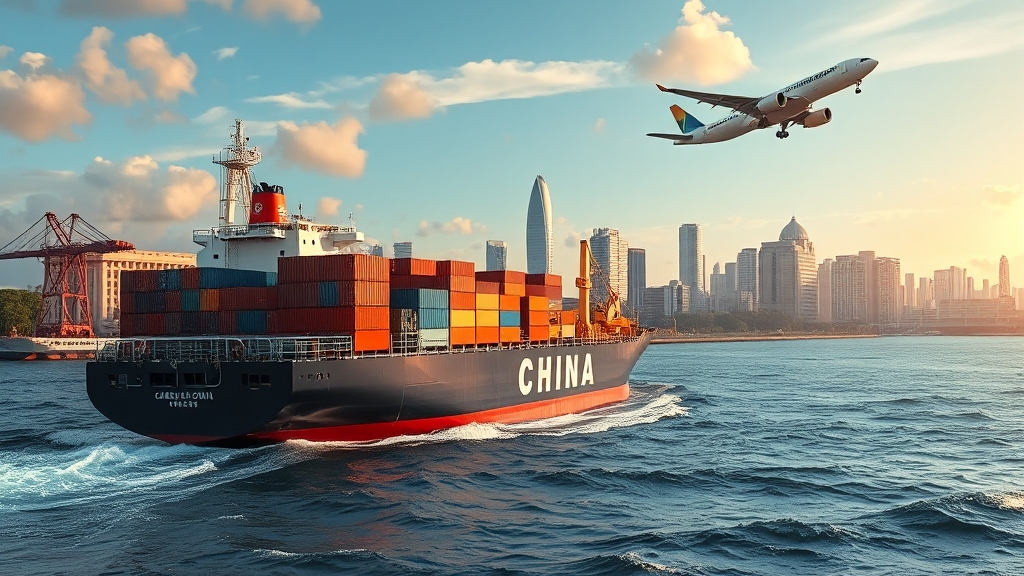
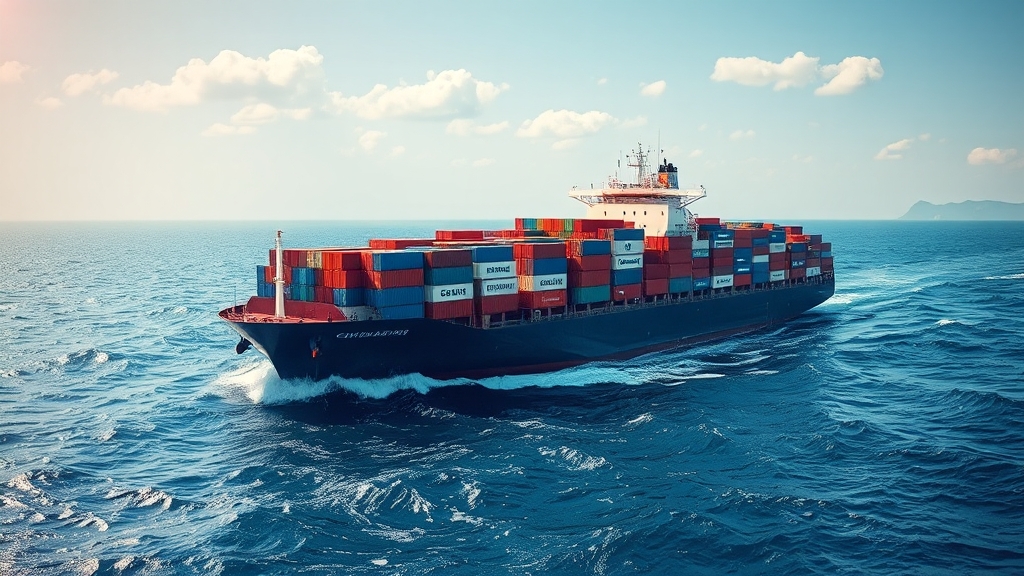





 Afrikaans
Afrikaans Shqip
Shqip አማርኛ
አማርኛ العربية
العربية Հայերեն
Հայերեն Azərbaycan dili
Azərbaycan dili Euskara
Euskara Беларуская мова
Беларуская мова বাংলা
বাংলা Bosanski
Bosanski Български
Български Català
Català Cebuano
Cebuano Chichewa
Chichewa 简体中文
简体中文 繁體中文
繁體中文 Corsu
Corsu Hrvatski
Hrvatski Čeština
Čeština Dansk
Dansk Nederlands
Nederlands English
English Esperanto
Esperanto Eesti
Eesti Filipino
Filipino Suomi
Suomi Français
Français Galego
Galego ქართული
ქართული Deutsch
Deutsch Ελληνικά
Ελληνικά Kreyol ayisyen
Kreyol ayisyen Harshen Hausa
Harshen Hausa Ōlelo Hawaiʻi
Ōlelo Hawaiʻi עִבְרִית
עִבְרִית हिन्दी
हिन्दी Hmong
Hmong Magyar
Magyar Íslenska
Íslenska Igbo
Igbo Bahasa Indonesia
Bahasa Indonesia Gaeilge
Gaeilge Italiano
Italiano 日本語
日本語 Basa Jawa
Basa Jawa ಕನ್ನಡ
ಕನ್ನಡ Қазақ тілі
Қазақ тілі ភាសាខ្មែរ
ភាសាខ្មែរ 한국어
한국어 كوردی
كوردی Кыргызча
Кыргызча ພາສາລາວ
ພາສາລາວ Latin
Latin Latviešu valoda
Latviešu valoda Lietuvių kalba
Lietuvių kalba Lëtzebuergesch
Lëtzebuergesch Македонски јазик
Македонски јазик Malagasy
Malagasy Bahasa Melayu
Bahasa Melayu മലയാളം
മലയാളം Maltese
Maltese Te Reo Māori
Te Reo Māori मराठी
मराठी Монгол
Монгол ဗမာစာ
ဗမာစာ नेपाली
नेपाली Norsk bokmål
Norsk bokmål پښتو
پښتو فارسی
فارسی Polski
Polski Português
Português ਪੰਜਾਬੀ
ਪੰਜਾਬੀ Română
Română Русский
Русский Samoan
Samoan Gàidhlig
Gàidhlig Српски језик
Српски језик Sesotho
Sesotho Shona
Shona سنڌي
سنڌي සිංහල
සිංහල Slovenčina
Slovenčina Slovenščina
Slovenščina Afsoomaali
Afsoomaali Español
Español Basa Sunda
Basa Sunda Kiswahili
Kiswahili Svenska
Svenska Тоҷикӣ
Тоҷикӣ தமிழ்
தமிழ் తెలుగు
తెలుగు ไทย
ไทย Türkçe
Türkçe Українська
Українська اردو
اردو O‘zbekcha
O‘zbekcha Tiếng Việt
Tiếng Việt Cymraeg
Cymraeg יידיש
יידיש Yorùbá
Yorùbá Zulu
Zulu